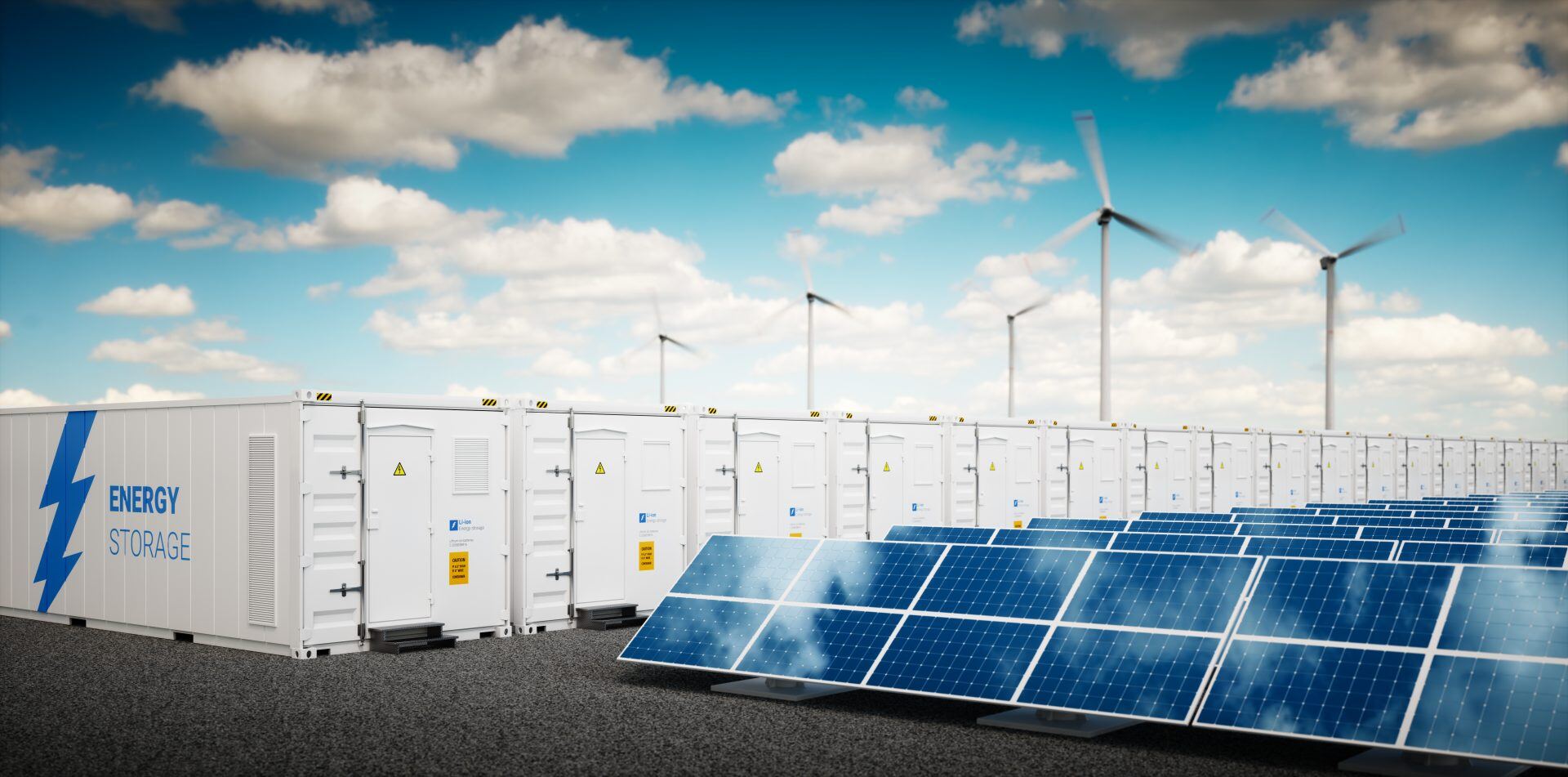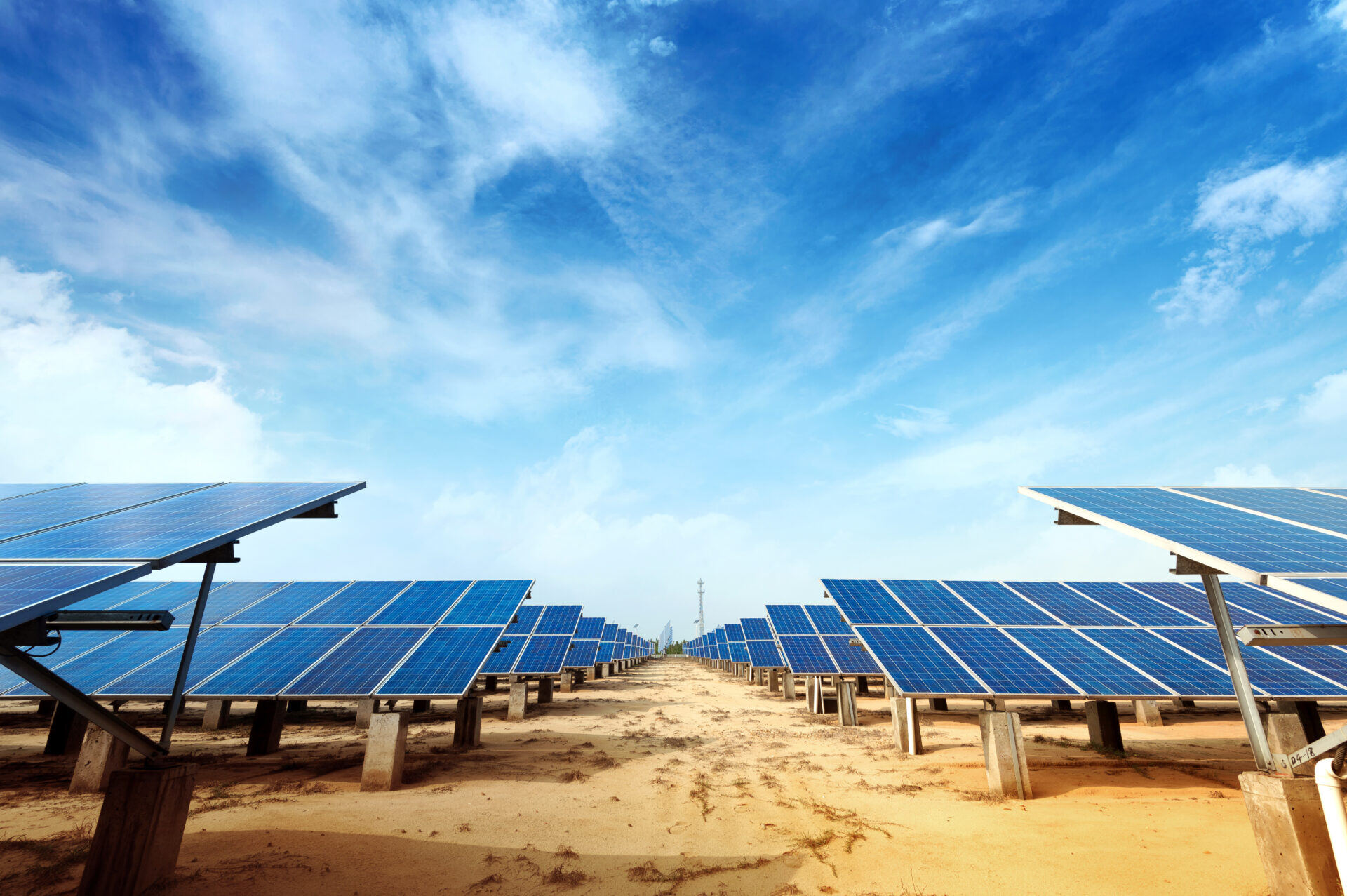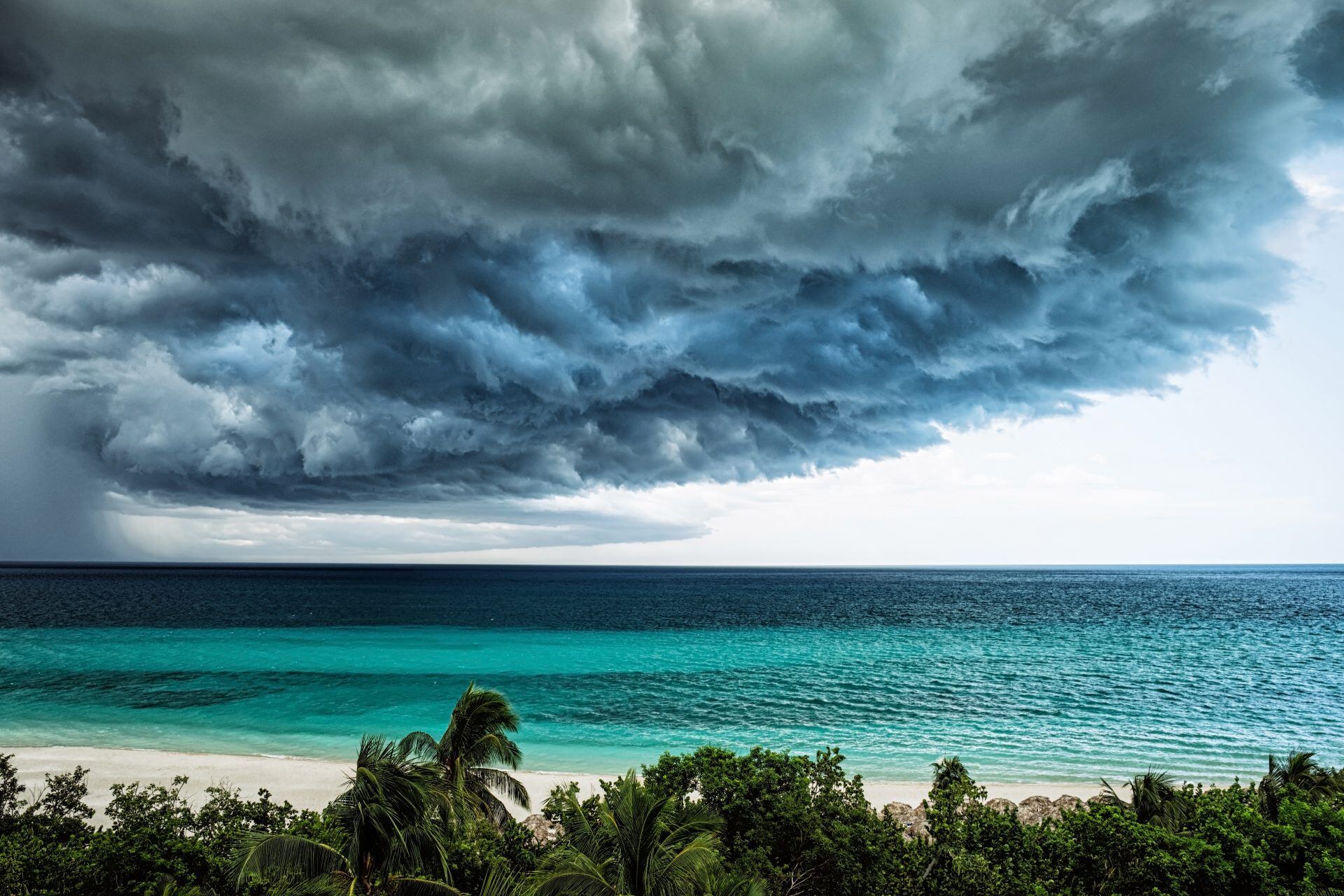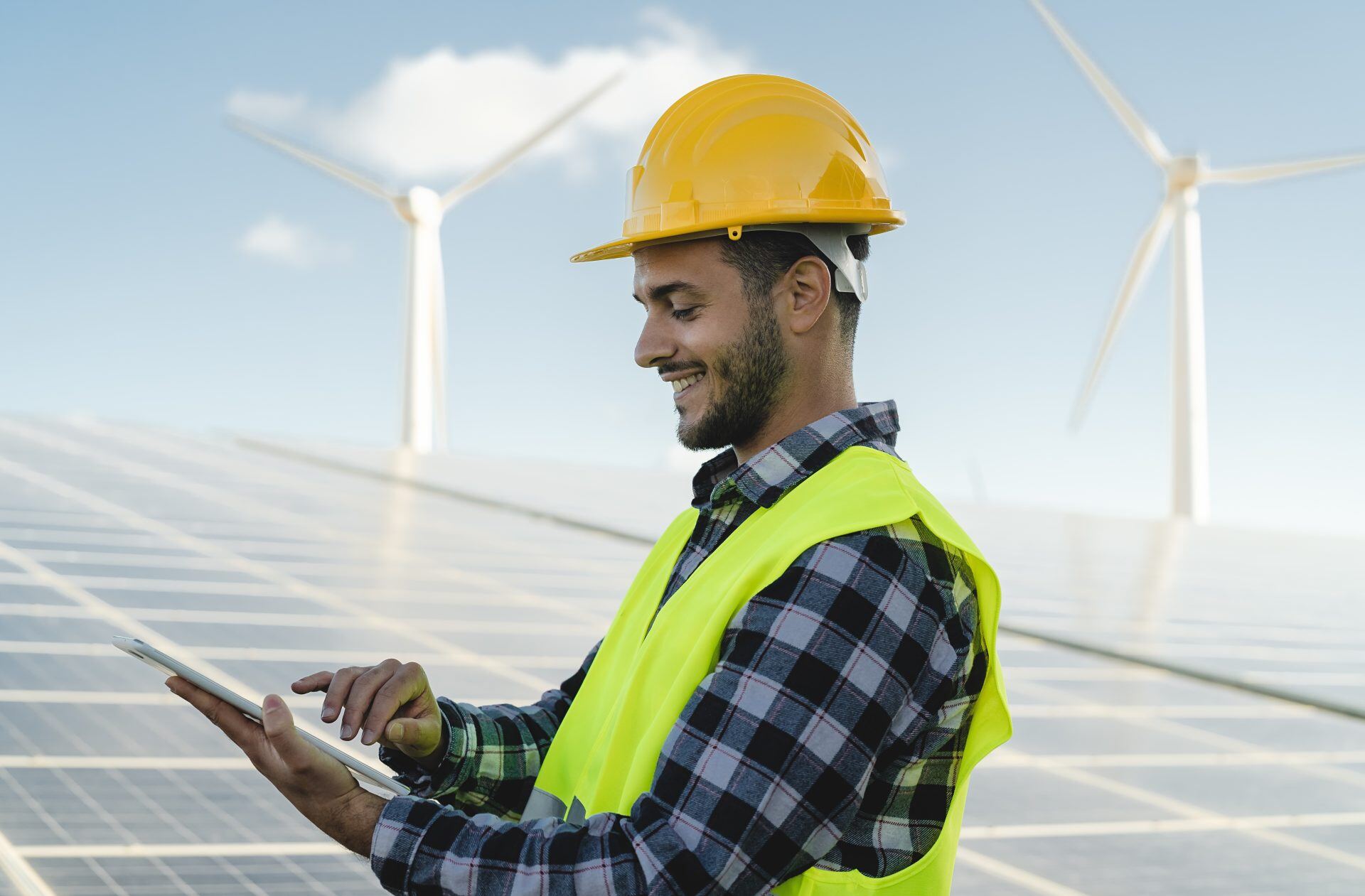Stay in touch
Subscribe to our newsletter for expert insights, company updates, and the latest in renewable energy management solutions.
THE GROWING RISK OF SEVERE HAILSTORMS — AND WHAT YOU CAN DO ABOUT IT
Severe hailstorms pose a growing risk to owners and operators of solar farms. While you can’t eliminate the threat of hail damage, you can reduce their impact with strategic planning, a combination of preventative and reactive maintenance, and a comprehensive asset management platform.
This is the second article in a series on extreme weather events. Don’t miss the first article in the series all about wildfire soiling — how to identify it, quantify its impacts and address it faster.
Though hailstorms hit solar farms less frequently than hurricanes and wildfires, they can inflict far more damage — and cause bigger financial losses — when they do.
In April 2021, we got a powerful reminder of the destructive power of hailstorms when softball-sized hailstones in Texas and Oklahoma caused one of the twenty US extreme weather and climate disasters that led to losses of over $1bn each in 2021 (National Oceanic & Atmospheric Administration).
Texas and Oklahoma are not alone in facing this threat. These two state are at the southern end of “Hail Alley,” which also includes central and southern states Colorado, Iowa, Kansas, Missouri, Nebraska, New Mexico, Oklahoma, and Wyoming. But hailstorms do represent a larger threat for the solar sector in Texas in particular, due to the number of solar farms in operation there.
Not surprisingly, insurance firms are also aware of hail’s destructive potential after the major losses experienced at projects over the last three years.
In this article, we look at the risk that hail poses for solar farms — and why these risks are increasing globally. We also look at what owners and operators can do to mitigate risk and how the industry overall is responding to the threat of hail.
WHY IS HAIL SUCH A RISK?
The largest financial loss caused by extreme weather at a US solar project between 2010 and 2020 was due to hail, according to renewable energy insurance specialist GCube. In May 2019, 174 Power Global was hit by hail that damaged 400,000 out of the 685,000 panels at its 178MW Midway Solar project in Texas resulting in losses of $70-$80 million.

Hailstorms make up a small percentage of the total weather-related insurance claims at solar farms, but their financial impacts are serious. A study published in 2021 and led by the Dr. Tim Raupach from the Climate Change Research Centre at the University of New South Wales, Australia, said human-made global warming would make hailstorms more common and damaging globally.
It is generally anticipated that low-level moisture and convective instability will increase, raising hailstorm likelihood and enabling the formation of larger hailstones,” it said.
And, while in North America they are expected to become less frequent, the research noted that the frequency was expected to increase in Europe and Australia.
This prediction of increased severity is borne out in reality. Texas saw the largest hailstone in its recorded history — with a circumference of 50.1cm / 19.73 inches — in the April 2021 storm. That is big enough that it would need to be held in two hands.
These risks are exacerbated by the increasing number of solar farms in Texas and across Hail Alley. Texas is the undisputed US green power hub, with 45GW of wind, solar and storage in operation, of which 7.4GW came online in 2021. Meanwhile, almost half (95.9GW) of the US’s installed 200GW renewables capacity is in the nine Hail Alley states that we identified earlier. That means hail is a major headache for owners and operators.
Texas also led the US in terms of solar installations in 2021, with 3.8GW built, but the state lags California for installed solar (9.3GW in Texas vs 31.9GW in California).
HOW CAN THE INDUSTRY RESPOND?
Hailstorms are unpredictable and can be devastating. And there is no solution that can completely prevent solar projects from sustaining damage. Therefore, owners and operators should ensure they have insurance that will cover them if the worst happens.
GCube said in its 2021 Hail or High Water report that the risk profile of natural catastrophes and extreme weather events to renewable asset owners and insurers has “changed significantly” over the last decade, “evidenced by the rising frequency and financial severity of claims.”
It said this had exposed weaknesses in the insurance market caused by entrants that offered low deductibles, low premiums, and broad terms to gain market share — and have suffered considerable losses as a result.
Therefore, the cost of insurance for natural catastrophes and extreme weather in the US has risen, as the sector more accurately prices risk and offers sustainable terms. While we’re not a renewables insurance specialist, it is sensible to ensure that you have the appropriate insurance cover in place if a disaster does happen.

Firms can use parametric insurance policies, which take effect when the hailstones that affect your project exceed a pre-defined size, to guard against losses.
In addition to insurance, here are some steps that owners and operators might want to take in the planning and operational stages of projects to help mitigate risks.
- Evolutions in predictive modeling
Owners and operators can factor in hail when they begin planning projects. They can consider the risk of hail damage at their project by looking at the changing weather patterns based on historic data for that location, not simply comparable projects. These predictions are becoming more sophisticated as hail risks increase.
Hailstorm modelling has been evolving quickly since 2019’s Midway disaster, with new models that blend radar data with human input. For example, VDE Americas has said that developers conventionally relied on basic heat maps to locate areas with severe hail potential, but that blending data from human storm spotters with data from doppler radar would be more efficient and accurate.
They said that adopting appropriate mitigation elements, operational elements, and equipment with stow management could significantly mitigate the impact of hail, but that the forecasts come first. This gives developers a better appreciation of the risks and shows that the industry is improving preparedness for extreme hail events.
- Resilient panels and robust mounting
Companies can also reduce their exposure to hail damage with the technology they choose. Larger solar panels are at greater risk of damage simply because of their surface areas, which means the financial losses when each is damaged is greater, according to solar market expertise from GCube.
Errors in the manufacturing process can also affect the structural integrity of panels and put them at more risk of damage when they are hit. However, organizations such as the International Photovoltaic Quality Assurance Task Force (PVQAT) are always looking for ways to improve the standards of solar panels in an effort to give investors greater confidence in solar investments and enable customers to choose the panels that best meet their needs. Improving manufacturing processes to boost panel integrity can also ensure they are less susceptible to damage from sources including hail.

Meanwhile, the Renewable Energy Test Center, in research with Nextracker, has been conducting research into solar panel damage. It found that solar panels with thinner glass were more at risk of shattering than those with thicker glass, which is not surprising.
But it also advised that taking steps such as glass-heat strengthening or tempering could make a big difference to their strength. Manufacturing quality can therefore play an important role in making turbines more resilient to hail.
Owners and operators may also need to invest in more robust mounting systems to increase the resilience of panels when exposed to external forces. This is important for mainly wind but also snow and ice loads. Developing solar farms for changing climate conditions is another area where solar manufacturers need to respond to changing risks.
- Investing in real-time sensors
Real-time sensors that accurately monitor changing weather conditions can also help identify changing conditions on the ground, and enable owners to automatically stow solar panels in an orientation that reduces their risk of hail damage.
For example, one such system enables operators to put their panels in a hail-stow mode that turns them 60 degrees so they aren’t hit by hailstones straight on. These systems can be expensive but being able to tilt solar panels can also help in other extreme weather events, such as by reducing the amount of snow that collects on panels.
This does not mean that 60 degrees will be optimal in every situation. The angle and velocity that hailstones will hit solar panels will vary — as will the size of the hailstones — and so unfortunately there is no solution that will work in every situation. However, the ability to tilt the panels can help in many cases.
We are also seeing patents for new self-stowing systems and, with hail becoming a bigger threat for solar operators, we only expect these innovations to become more sophisticated in the coming years. We expect this to mitigate damage and losses.
- Tracking cracking
Micro-cracking in solar panels after a hailstorm is another risk that owners and operators should be aware of and monitor. This is important following a hailstorm when smaller hailstones may damage panels in ways that are imperceptible, particularly as it is not just the size of the hailstone that does damage but also the angle and velocity. These smaller cracks can undermine their performance — and we see increasing amounts of data and research showing how wear-and-tear affects performance at solar farms.

One additional risk that could cause or exacerbate micro-cracking is how the operations and maintenance at solar farms is performed. The US Department of Energy’s Solar Futures Study, published in September 2021, looks at the potential for solar to play a major role in the decarbonization of the US grid by 2050.
It warns that trends such as “manual or mechanized cleaning… can sometimes damage module surfaces,” and undermine their structural integrity. While it does not go into further detail about the risks of extreme weather, the report’s focus on the growth of the solar industry at large shows why firms are right to be proactive.
Of course, this is not solely the responsibility of owners and operators. Manufacturers in the solar industry are also stepping up, developing panels that can sustain more damage. The US solar sector has historically focused on wildfire risks, due to the higher proportion of projects that were built in California, but companies are adapting to new weather risks.
We expect to see significant advances in the emerging field of hail protection at solar farms in the years ahead.
WHAT ROLE DOES SOFTWARE PLAY?
Software can’t help much while your project is being hit by a hailstorm. However, it can play an important role in your strategy before and after disaster strikes. The right digital asset management platform can help you ensure your projects are structurally sound and performing as expected before and after a weather event.
Digital asset management platforms can help solar and wind owners identify tiny changes in performance that may indicate structural weaknesses that need to be fixed. When projects are not regularly monitored, these weaknesses can go unnoticed and put projects at risk of underperformance — and of sustaining greater damage during future hailstorms.

Asset management software platforms can also help companies to effectively deploy their technicians and identify and source replacement parts after damage occurs.
Finally, resilient IT systems are beneficial when it comes to assessing damage and bringing assets back online after disaster strikes. These are all important aspects of planning for extreme weather.
CONCLUSION
While we can expect hailstorms to become more common and damaging globally, there are steps that owners and operators of solar plants in high-risk areas can take to prepare for and mitigate costly impacts.
First, make sure you have appropriate insurance. Factor in hail during planning and development. Consider investing in more resilient panels, robust mounting, and real-time sensors. If you do experience a hailstorm, monitor performance closely so you can catch damage — even if you don’t see any damage.
Finally, make sure you have an asset performance management platform that tells you how your projects are performing in near-real-time and that integrates with other systems (such as field service management software) so you’re able to repair any damage quickly and effectively.
Looking for asset management software for your business? Find out the nine key questions you should be asking before you buy. Get the e-book.






